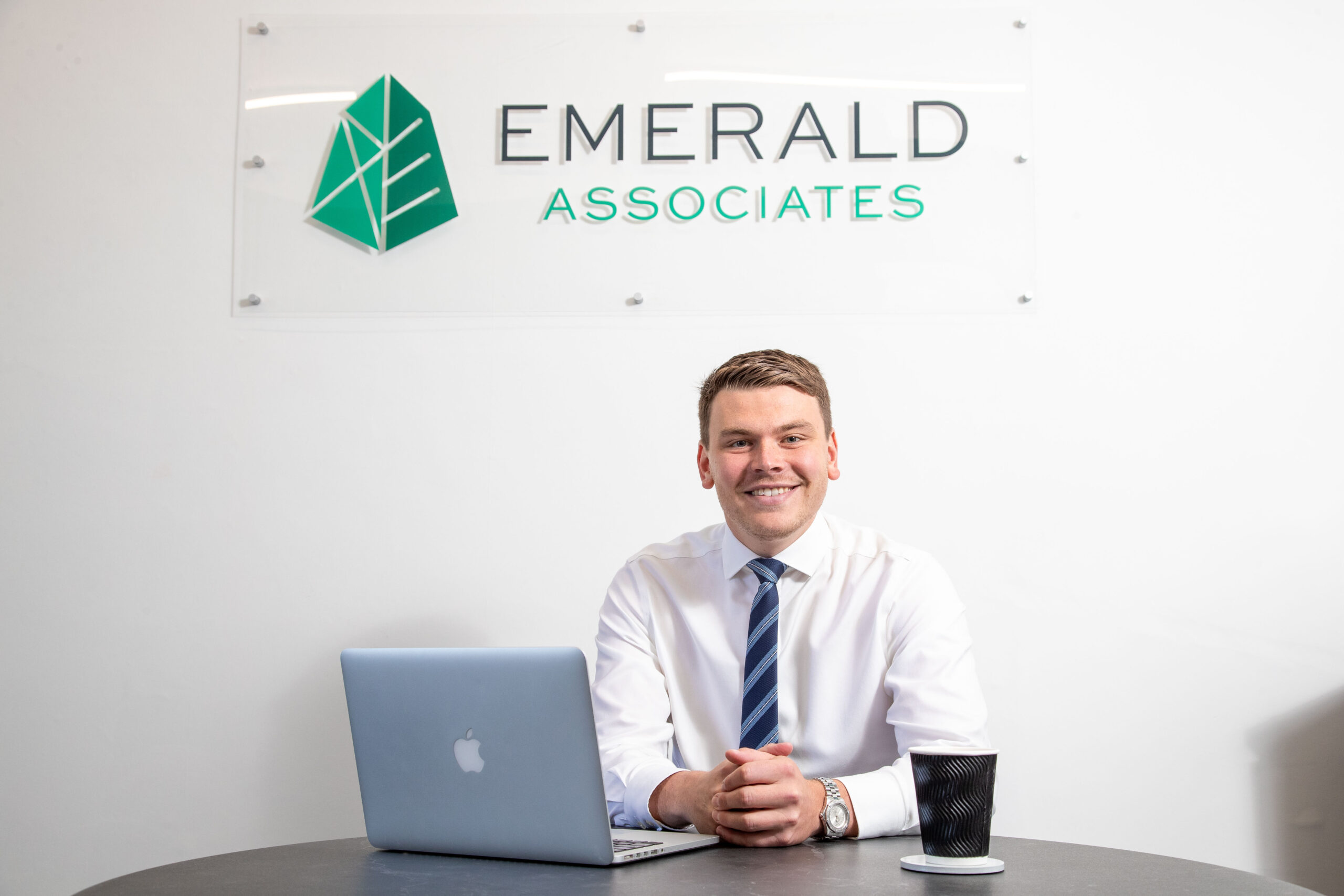Hartlepool-born Harrison Smith is a financial adviser based in his hometown’s Greenbank business centre associated with Emerald Associates. Harrison offers an insight into money matters in an exclusive monthly column for North East Connected.
When I was younger, I never thought about what my finances looked like too much. After all, I was either having fun at college or university, or living at home with mam and dad. Money came in and then went out – having a good time spending it.
Following the college and university years, I looked at the exciting holidays and the nice cars because, despite being young, I had a well-paid job for my age, so I spent.
There are plenty others just like that. And who am I to say don’t go and enjoy life with your friends while you are young? I know differently now, and it’s about getting that balance right – no matter how old you are.
People need a little clarity on what needs to be done and in what order and I’m going to help you have that. To do this, start by picturing a triangle.
A triangle is said to be the sturdiest shape known to man so it’s quite fitting that a financial plan can be structured using a pyramid.
When I was working at a supermarket in my younger days, I was thousands of pounds into my overdraft within eight weeks of starting. It took me months to get the money back.
A few years later I was settling down with my fiancée, with a mortgage over our heads. It was only then when I really started to think about these things more and the pyramid is a great way to process planning ahead.
It doesn’t matter what age, you need to start by thinking about the worst-case scenario, and if you have that covered then everything else is a bonus.
Most people don’t envisage going anywhere and this article isn’t just aimed at the younger generation, it’s for everyone to think about.
For example, everyone insures their pet or mobile phone, and yet they don’t always insure themselves. That’s crazy because the family pet or the latest iPhone doesn’t have a mortgage over its head.
Whereas if something happens to you or a family member then your world turns upside down. You don’t want financial worries to be another added stress at those awful times.
Let’s look at the basics. The easiest way to think of structuring a financial plan is to think about how you would build that pyramid.
THE BASE
According to NHS research, one in two people will unfortunately be diagnosed with some form of cancer in their lifetime so please do not fall into the trap of thinking that these things won’t happen to you, they unfortunately just might.
The pyramid base comes in the form of protection – or worst-case scenario management.
This can come in different forms and building this element will depend on each individual’s unique circumstances. What will happen to my family if I pass away? What if I am off work long term? What if I have a serious illness?
Most people, for obvious reasons, don’t like to discuss this area, however this is the most vital part of the pyramid, hence why it is the base. The best financial plan for the future can crumble if the unforeseen happens.
Also give some thought to building an emergency budget of savings. This may not be related to illness, it might just be to cover something such as the boiler breaking.
In last month’s column I described how recent UK savings statistics from Bank of England 1, revealed how 34 per cent of adults are said to have either no savings, or less than £1000, in a savings account.
MID-SECTION
So, we’ve built a base, things are looking more stable – now it’s time to keep building.
The next phase of construction is the mid-section of the pyramid, and this is what I will label the wealth accumulation phase.
Typically, what we will see here are longer-term savings, investment planning, retirement planning, maybe property or other assets as such. Here we are effectively growing our wealth for future use – such as retirement, children’s weddings, first cars, house deposits, the list goes on.
The best examples of this area will be those that are tax-efficient and utilise tax-efficient solutions with their wealth.

Picture by Tom Banks
Copyright Tom Banks 2023. For editorial and commercial use only. No third party archiving of this image. No secondary use by any third party without strictest permission of the Tom Banks/Banks Photo. Strictly no syndication without permission from Tom Banks/ Banks Photo
THE TOP
Having worked hard on building a financial plan, remember it’s all about balance and getting things right so you can still go out and enjoy yourselves.
And now we have reached the final area of the financial planning pyramid, the bit everyone enjoys the most – the spending bit.
Don’t try to get to the top of the pyramid, without building your way there.
To receive a complimentary guide covering wealth management, retirement planning or Inheritance Tax planning, contact Harrison on 07885613983 or email Harrison.smith@sjpp.co.uk.
